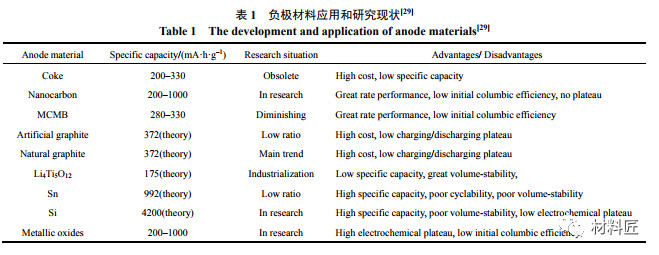- English
- Español
- Português
- русский
- Français
- 日本語
- Deutsch
- tiếng Việt
- Italiano
- Nederlands
- ภาษาไทย
- Polski
- 한국어
- Svenska
- magyar
- Malay
- বাংলা ভাষার
- Dansk
- Suomi
- हिन्दी
- Pilipino
- Türkçe
- Gaeilge
- العربية
- Indonesia
- Norsk
- تمل
- český
- ελληνικά
- український
- Javanese
- فارسی
- தமிழ்
- తెలుగు
- नेपाली
- Burmese
- български
- ລາວ
- Latine
- Қазақша
- Euskal
- Azərbaycan
- Slovenský jazyk
- Македонски
- Lietuvos
- Eesti Keel
- Română
- Slovenski
- मराठी
- Srpski језик
Why does lithium battery capacity decrease in winter
2024-01-02
Why does lithium battery capacity decrease in winter
Since entering the market, lithium-ion batteries have been widely used due to their advantages such as long lifespan, large specific capacity, and no memory effect. Low temperature use of lithium-ion batteries has problems such as low capacity, severe attenuation, poor cycle rate performance, obvious lithium evolution, and imbalanced lithium removal and insertion. However, with the continuous expansion of application fields, the constraints brought by the poor low-temperature performance of lithium-ion batteries are becoming increasingly apparent.
According to reports, the discharge capacity of lithium-ion batteries at -20 ℃ is only about 31.5% of that at room temperature. Traditional lithium-ion batteries operate at temperatures between -20~+55 ℃. However, in fields such as aerospace, military, and electric vehicles, it is required that the battery can operate normally at -40 ℃. Therefore, improving the low-temperature properties of lithium-ion batteries is of great significance.
Factors restricting the low-temperature performance of lithium-ion batteries
- In low-temperature environments, the viscosity of the electrolyte increases and even partially solidifies, leading to a decrease in the conductivity of lithium-ion batteries.
- The compatibility between electrolyte, negative electrode, and separator deteriorates in low-temperature environments.
- The negative electrode of lithium-ion batteries in low-temperature environments experiences severe lithium precipitation, and the precipitated metallic lithium reacts with the electrolyte, resulting in the deposition of its products and an increase in the thickness of the solid electrolyte interface (SEI).
- In low-temperature environments, the diffusion system of lithium-ion batteries within the active material decreases, and the charge transfer impedance (Rct) significantly increases.
Expert Opinion 1: Electrolyte has the greatest impact on the low-temperature performance of lithium-ion batteries, and the composition and physicochemical properties of electrolyte have an important impact on the low-temperature performance of batteries. The problem faced by low-temperature cycling of batteries is that the viscosity of the electrolyte increases, the ion conduction speed slows down, and the migration speed of electrons in the external circuit does not match, resulting in severe polarization of the battery and a sharp decrease in charging and discharging capacity. Especially when charging at low temperatures, lithium ions can easily form lithium dendrites on the negative electrode surface, leading to battery failure.
The low-temperature performance of an electrolyte is closely related to its own conductivity. Electrolytes with high conductivity transport ions quickly and can exert more capacity at low temperatures. The more lithium salts dissociate in the electrolyte, the more migration occurs, and the higher the conductivity. The higher the conductivity and the faster the ion conduction rate, the smaller the polarization received, and the better the performance of the battery at low temperatures. Therefore, a higher conductivity is a necessary condition for achieving good low-temperature performance of lithium-ion batteries.
The conductivity of an electrolyte is related to its composition, and reducing the viscosity of the solvent is one of the ways to improve the conductivity of the electrolyte. The good fluidity of solvents at low temperatures is a guarantee for ion transport, and the solid electrolyte film formed by the electrolyte on the negative electrode at low temperatures is also a key factor affecting lithium ion conduction, and RSEI is the main impedance of lithium-ion batteries in low-temperature environments.
Expert 2: The main factor limiting the low-temperature performance of lithium-ion batteries is the rapidly increasing Li+diffusion impedance at low temperatures, rather than the SEI membrane.
Low temperature characteristics of positive electrode materials for lithium-ion batteries
1. Low temperature characteristics of layered positive electrode materials
Layered structure, with unparalleled rate performance compared to one-dimensional lithium-ion diffusion channels and structural stability of three-dimensional channels, is the earliest commercially available positive electrode material for lithium-ion batteries. Its representative substances include LiCoO2, Li (Co1 xNix) O2, and Li (Ni, Co, Mn) O2.
Xie Xiaohua et al. studied LiCoO2/MCMB and tested its low-temperature charging and discharging characteristics.
The results showed that as the temperature decreased, the discharge plateau decreased from 3.762V (0 ℃) to 3.207V (-30 ℃); The total battery capacity has also sharply decreased from 78.98mA · h (0 ℃) to 68.55mA · h (-30 ℃).
2. Low temperature characteristics of spinel structured cathode materials
The spinel structured LiMn2O4 cathode material has the advantages of low cost and non toxicity due to its absence of Co element.
However, the variable valence states of Mn and the Jahn Teller effect of Mn3+result in structural instability and poor reversibility of this component.
Peng Zhengshun et al. pointed out that different preparation methods have a great impact on the electrochemical performance of LiMn2O4 cathode materials. Take Rct as an example: the Rct of LiMn2O4 synthesized by high-temperature solid phase method is significantly higher than that synthesized by sol gel method, and this phenomenon is also reflected in the lithium ion diffusion coefficient. The main reason for this is that different synthesis methods have a significant impact on the crystallinity and morphology of the products.
3. Low temperature characteristics of phosphate system cathode materials
LiFePO4, together with ternary materials, has become the main positive electrode material for power batteries due to its excellent volume stability and safety. The poor low-temperature performance of lithium iron phosphate is mainly due to its material being an insulator, low electronic conductivity, poor lithium ion diffusion, and poor conductivity at low temperatures, which increases the internal resistance of the battery and is greatly affected by polarization, hindering the charging and discharging of the battery, resulting in unsatisfactory low-temperature performance.
When studying the charge and discharge behavior of LiFePO4 at low temperatures, Gu Yijie et al. found that its Coulombic efficiency decreased from 100% at 55 ℃ to 96% at 0 ℃ and 64% at -20 ℃, respectively; The discharge voltage decreases from 3.11V at 55 ℃ to 2.62V at -20 ℃.
Xing et al. modified LiFePO4 using nanocarbon and found that the addition of nanocarbon conductive agents reduced the sensitivity of LiFePO4's electrochemical performance to temperature and improved its low-temperature performance; The discharge voltage of modified LiFePO4 decreased from 3.40V at 25 ℃ to 3.09V at -25 ℃, with a decrease of only 9.12%; And its battery efficiency is 57.3% at -25 ℃, higher than 53.4% without nanocarbon conductive agents.
Recently, LiMnPO4 has aroused strong interest among people. Research has found that LiMnPO4 has advantages such as high potential (4.1V), no pollution, low price, and large specific capacity (170mAh/g). However, due to the lower ionic conductivity of LiMnPO4 compared to LiFePO4, Fe is often used to partially replace Mn to form LiMn0.8Fe0.2PO4 solid solutions in practice.
Low temperature characteristics of negative electrode materials for lithium-ion batteries
Compared to positive electrode materials, the low-temperature degradation phenomenon of negative electrode materials in lithium-ion batteries is more severe, mainly due to the following three reasons:
- During low-temperature high rate charging and discharging, the battery polarization is severe, and a large amount of lithium metal deposits on the negative electrode surface, and the reaction products between lithium metal and electrolyte generally do not have conductivity;
-
- From a thermodynamic perspective, the electrolyte contains a large number of polar groups such as C-O and C-N, which can react with negative electrode materials, resulting in SEI films that are more susceptible to low temperature effects;
-
- It is difficult to embed lithium in carbon negative electrodes at low temperatures, resulting in asymmetric charging and discharging.

Research on Low Temperature Electrolytes
The electrolyte plays a role in transmitting Li+in lithium-ion batteries, and its ion conductivity and SEI film formation performance have a significant impact on the low-temperature performance of the battery. There are three main indicators for judging the quality of low-temperature electrolytes: ion conductivity, electrochemical window, and electrode reaction activity. The level of these three indicators largely depends on their constituent materials: solvents, electrolytes (lithium salts), and additives. Therefore, the study of the low-temperature performance of various parts of the electrolyte is of great significance for understanding and improving the low-temperature performance of batteries.
- Compared to chain carbonates, EC based electrolytes have a compact structure, high interaction force, and higher melting point and viscosity. However, the large polarity brought by the circular structure often results in a high dielectric constant. The high dielectric constant, high ion conductivity, and excellent film-forming performance of EC solvents effectively prevent the co insertion of solvent molecules, making them indispensable. Therefore, most commonly used low-temperature electrolyte systems are based on EC and mixed with low melting point small molecule solvents.
-
- Lithium salts are an important component of electrolytes. Lithium salts in electrolytes can not only improve the ionic conductivity of the solution, but also reduce the diffusion distance of Li+in the solution. Generally speaking, the higher the concentration of Li+in a solution, the higher its ion conductivity. However, the concentration of lithium ions in the electrolyte is not linearly correlated with the concentration of lithium salts, but rather exhibits a parabolic shape. This is because the concentration of lithium ions in the solvent depends on the strength of the dissociation and association of lithium salts in the solvent.
Research on Low Temperature Electrolytes
In addition to the battery composition itself, process factors in practical operation can also have a significant impact on battery performance.
(1) Preparation process. Yaqub et al. studied the effect of electrode load and coating thickness on the low-temperature performance of LiNi0.6Co0.2Mn0.2O2/Graphite batteries and found that in terms of capacity retention, the smaller the electrode load and the thinner the coating layer, the better its low-temperature performance.
(2) Charging and discharging status. Petzl et al. studied the effect of low-temperature charging and discharging conditions on the cycle life of batteries and found that when the discharge depth is large, it will cause significant capacity loss and reduce the cycle life.
(3) Other factors. The surface area, pore size, electrode density, wettability between electrode and electrolyte, and separator all affect the low-temperature performance of lithium-ion batteries. In addition, the impact of material and process defects on the low-temperature performance of batteries cannot be ignored.
To ensure the low-temperature performance of lithium-ion batteries, the following points need to be done well:
(1) Forming a thin and dense SEI film;
(2) Ensure that Li+has a high diffusion coefficient in the active substance;
(3) Electrolytes have high ionic conductivity at low temperatures.
In addition, research can take a different approach and focus on another type of lithium-ion battery - all solid state lithium-ion batteries. Compared to conventional lithium-ion batteries, all solid-state lithium-ion batteries, especially all solid-state thin-film lithium-ion batteries, are expected to completely solve the capacity degradation and cycling safety issues of batteries used at low temperatures.



